Abstract
Marshall, K. C. (Cornell University, Ithaca, N. Y.) and M. Alexander. Nitrification by Aspergillus flavus. J. Bacteriol. 83:572–578. 1962.—Aspergillus flavus has been shown to produce bound hydroxylamine, nitrite, and nitrate when grown in peptone, amino acid, or buffered ammonium media. Free hydroxylamine was not detected in these cultures, but it was found in an unbuffered ammonium medium in which neither nitrite nor nitrate was formed. Evidence was obtained for the presence of β-nitropropionic acid in the filtrate of an actively nitrifying culture. Alumina treatment of an ammonium medium prevented the formation by growing cultures of nitrite and nitrate but not bound hydroxylamine. The effect of alumina treatment was reversed by the addition of 10−3m CeCl3 to the medium.
Extracts of the fungus contained peroxidase and an enzyme capable of catalyzing the production of nitrite from β-nitropropionic acid. The nitrite-forming enzyme is apparently specific for β-nitropropionate; no activity was found with nitromethane, nitroethane, and nitropropane as substrates. Nitrate was not reduced to nitrite nor was nitrite oxidized to nitrate by the hyphal extracts. The significance of these observations in nitrification by A. flavus is discussed.
Full text
PDF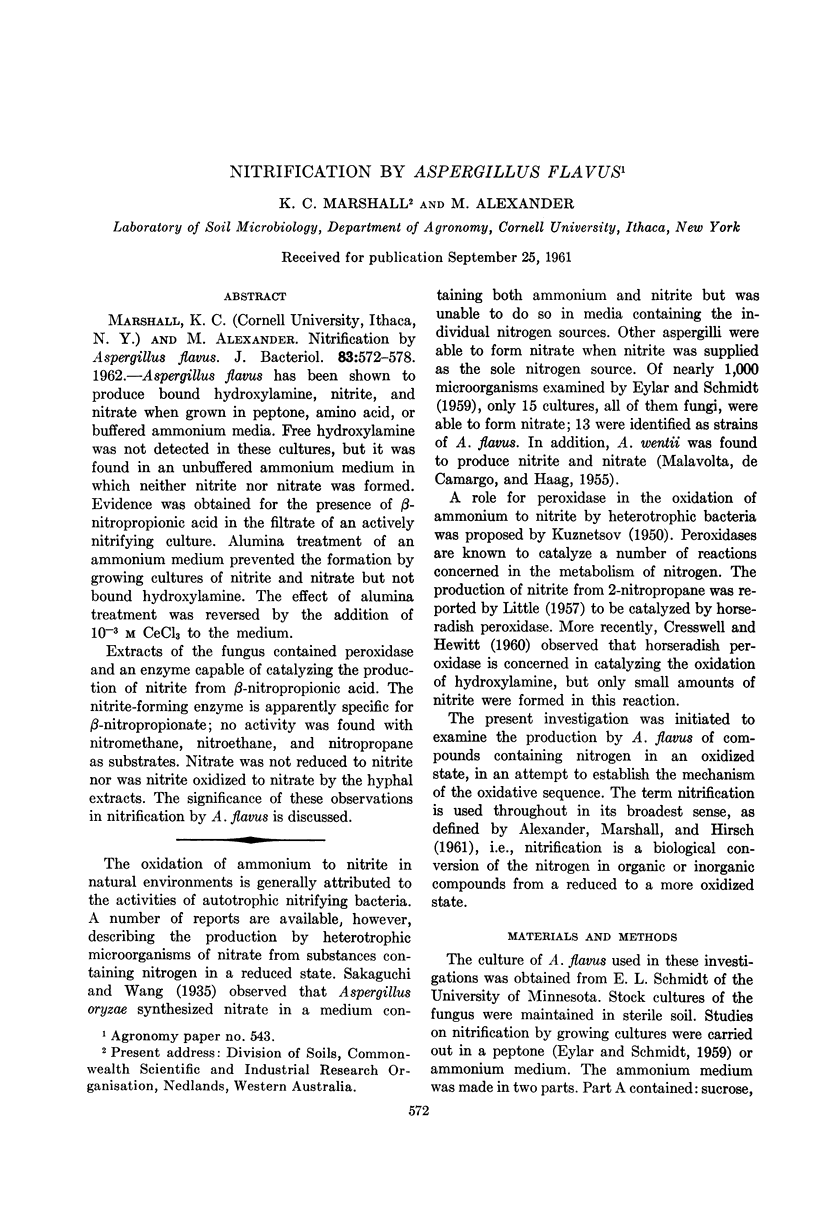
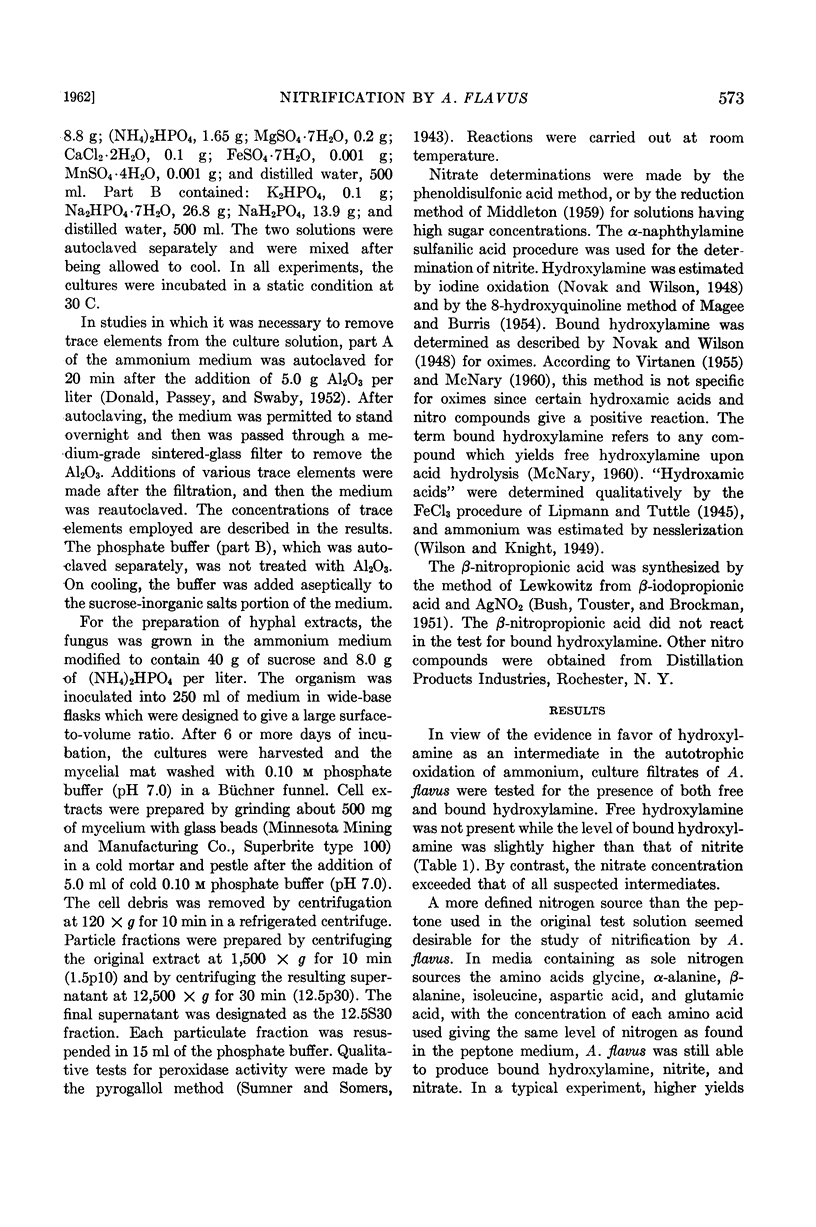
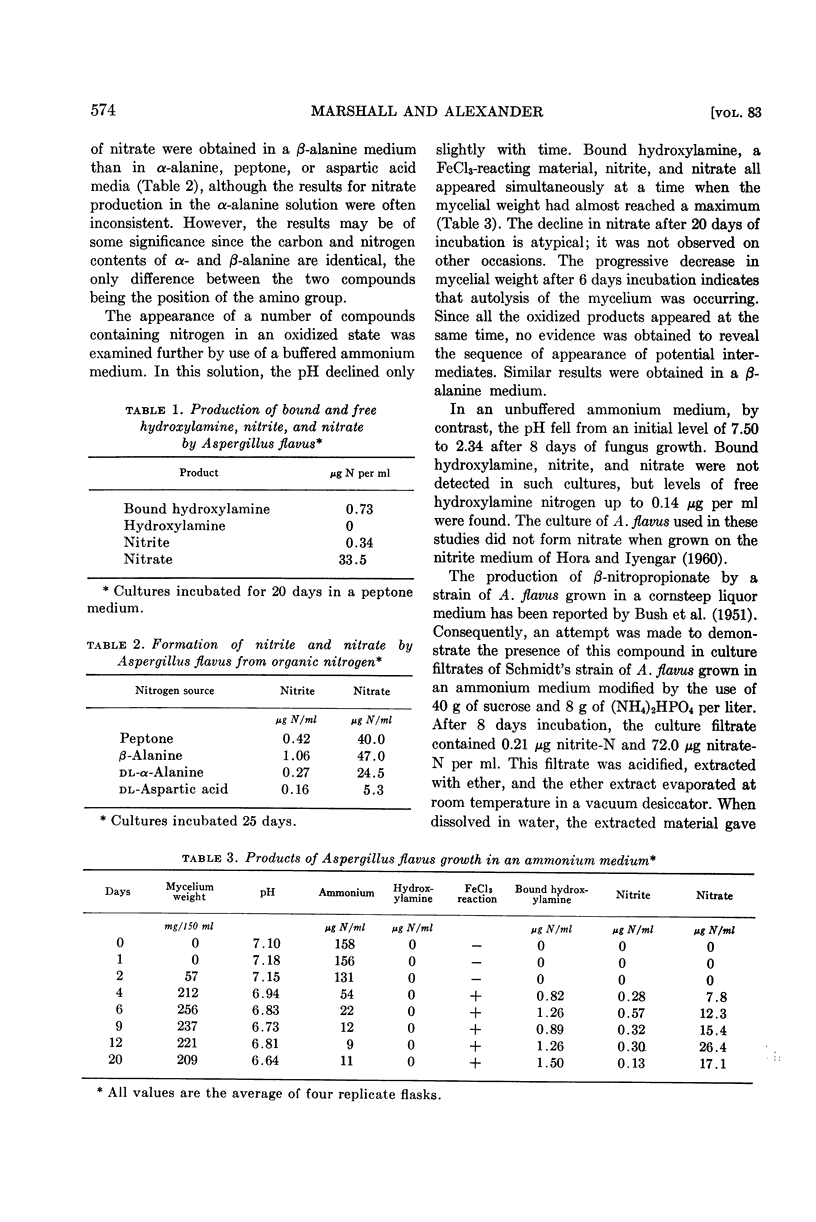
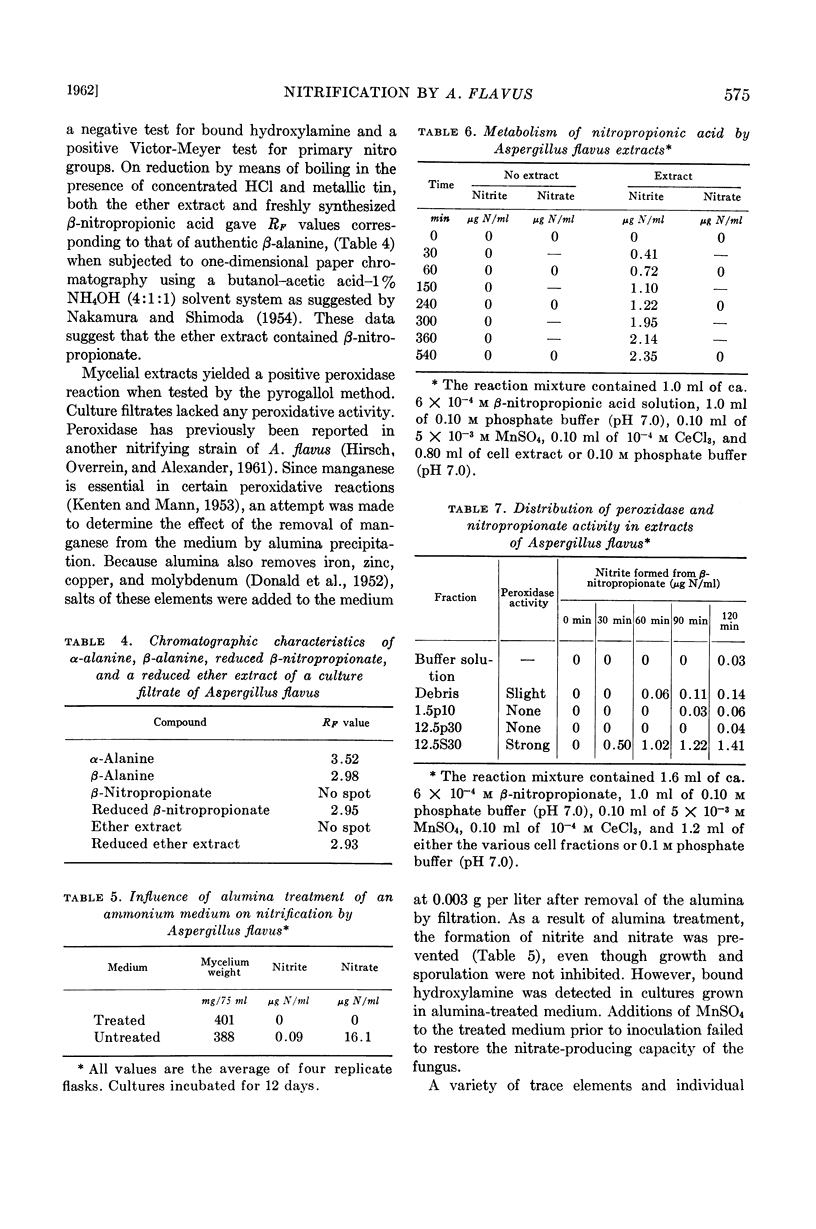
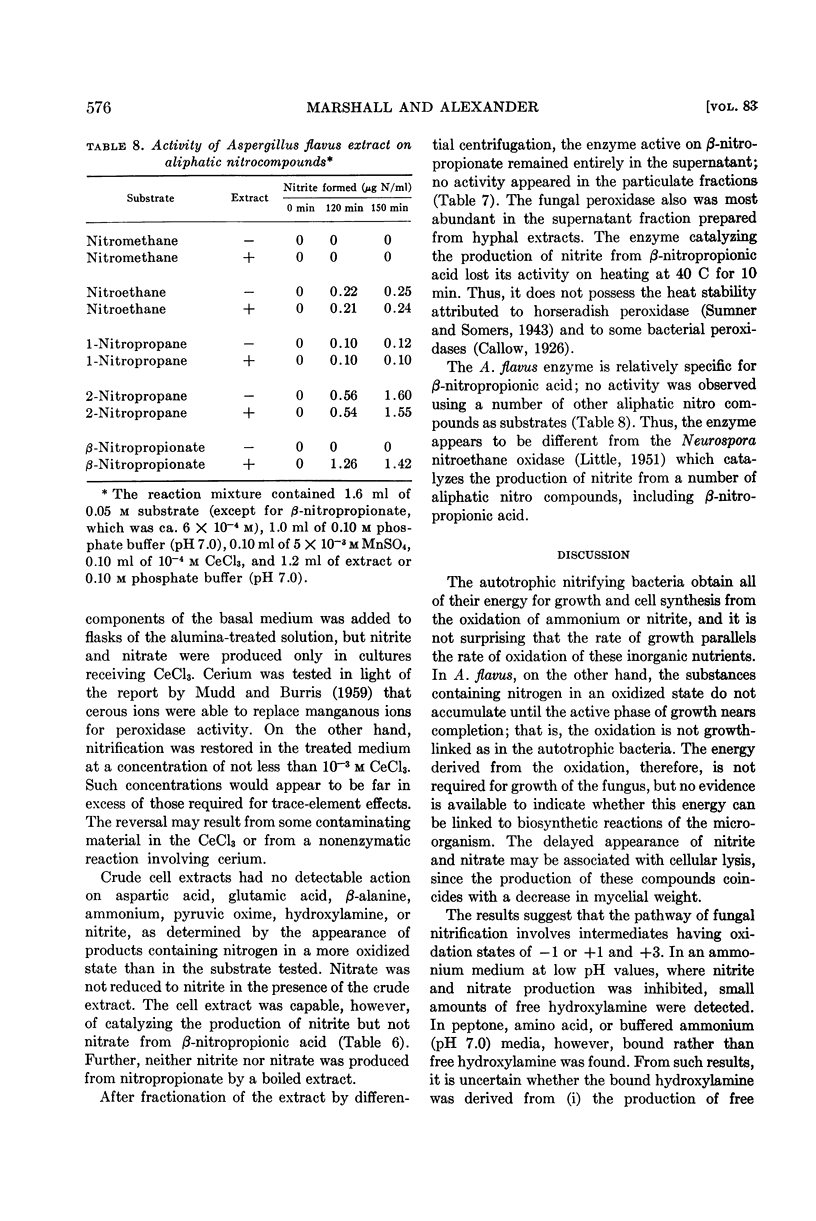
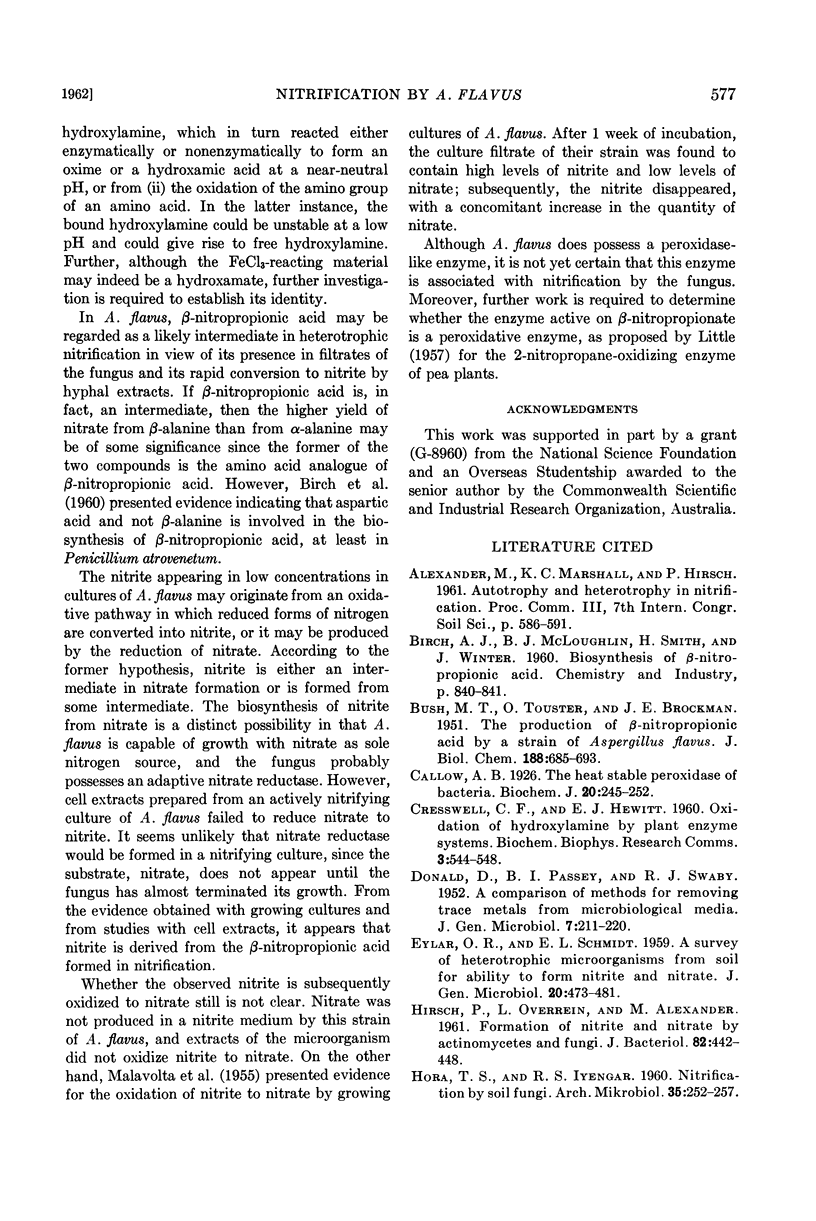
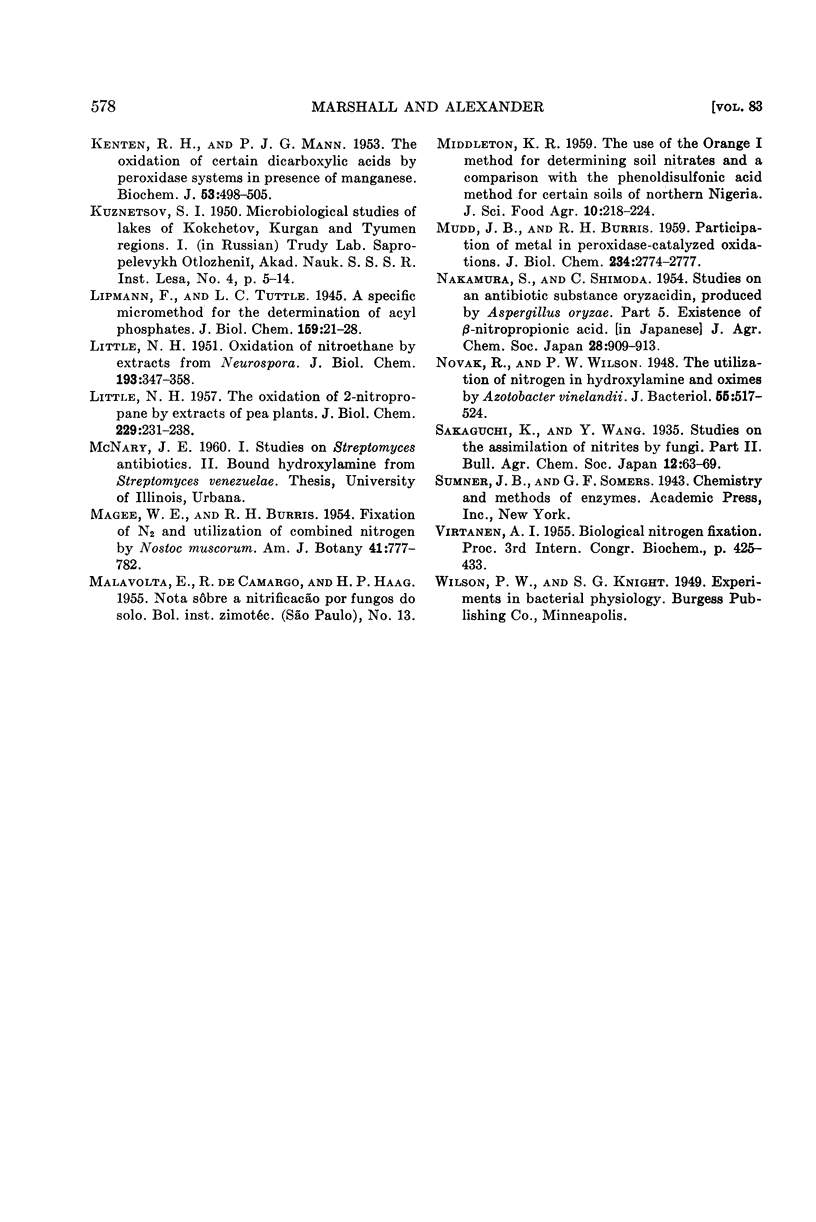
Selected References
These references are in PubMed. This may not be the complete list of references from this article.
- BUSH M. T., TOUSTER O., BROCKMAN J. E. The production of beta-nitropropionic acid by a strain of Aspergillus flavus. J Biol Chem. 1951 Feb;188(2):685–693. [PubMed] [Google Scholar]
- CRESSWELL C. F., HEWITT E. J. Oxidation of hydroxylamine by plant enzyme systems. Biochem Biophys Res Commun. 1960 Nov;3:544–548. doi: 10.1016/0006-291x(60)90172-8. [DOI] [PubMed] [Google Scholar]
- Callow A. B. The Heat-Stable Peroxidase of Bacteria. Biochem J. 1926;20(2):247–252. doi: 10.1042/bj0200247. [DOI] [PMC free article] [PubMed] [Google Scholar]
- DONALD C., PASSEY B. I., SWABY R. J. A comparison of methods for removing trace metals from microbiological media. J Gen Microbiol. 1952 Nov;7(3-4):211–220. doi: 10.1099/00221287-7-3-4-211. [DOI] [PubMed] [Google Scholar]
- EYLAR O. R., Jr, SCHMIDT E. L. A survey of heterotrophic micro-organisms from soil for ability to form nitrite and nitrate. J Gen Microbiol. 1959 Jun;20(3):473–481. doi: 10.1099/00221287-20-3-473. [DOI] [PubMed] [Google Scholar]
- HIRSCH P., OVERREIN L., ALEXANDER M. Formation of nitrite and nitrate by actinomycetes and fungi. J Bacteriol. 1961 Sep;82:442–448. doi: 10.1128/jb.82.3.442-448.1961. [DOI] [PMC free article] [PubMed] [Google Scholar]
- HORA T. S., IYENGAR M. R. Nitrification by soil fungi. Arch Mikrobiol. 1960;35:252–257. doi: 10.1007/BF00446826. [DOI] [PubMed] [Google Scholar]
- KENTEN R. H., MANN P. J. G. The oxidation of certain dicarboxylic acids by peroxidase systems in presence of manganese. Biochem J. 1953 Feb;53(3):498–505. doi: 10.1042/bj0530498. [DOI] [PMC free article] [PubMed] [Google Scholar]
- LITTLE H. N. Oxidation of nitroethane by extracts from Neurospora. J Biol Chem. 1951 Nov;193(1):347–358. [PubMed] [Google Scholar]
- LITTLE H. N. The oxidation of 2-nitropropane by extracts of pea plants. J Biol Chem. 1957 Nov;229(1):231–238. [PubMed] [Google Scholar]
- MUDD J. B., BURRIS R. H. Participation of metals in peroxidasecatalyzed oxidations. J Biol Chem. 1959 Oct;234:2774–2777. [PubMed] [Google Scholar]
- Novak R., Wilson P. W. The Utilization of Nitrogen in Hydroxylamine and Oximes by Azotobacter vinelandii. J Bacteriol. 1948 Apr;55(4):517–524. doi: 10.1128/jb.55.4.517-524.1948. [DOI] [PMC free article] [PubMed] [Google Scholar]


